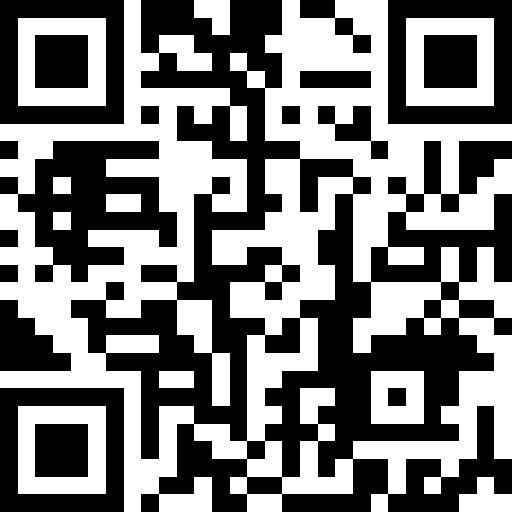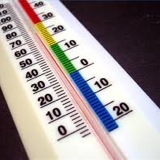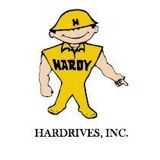Information
-
Document No.
-
Audit Title
-
Client / Site
-
Conducted on
-
Prepared by
-
Location
-
Personnel
LOCATION PERSONNEL
-
CUSTOMER REPRESENTATIVE
-
SAFETY OFFICER
-
NACHER FOREMAN
-
NACHER crew members: Note any SSE Personnel and mentors by (SSE/M)
SITE RECORDS
-
Work Pack
-
JSA's
-
Signed BMP Plan
-
Paint MSDS's
-
BBS Cards
-
COMMENTS
PROCEDURES
-
Nacher safety policies and procedures
-
Work permit
-
JSA reports
-
Hot work permit
-
Lockout/tagout permit
-
Confined space permit
-
COMMENTS
STORAGE FACILITES
-
Is an inventory of hazardous chemicals conducted annually?
-
Does the inventory include location of each hazardous chemical?
-
Are MSDS's on hand for all chemicals listed on inventory and used on the project?
-
Do employees know how to read MSDS's?
-
Are MSDS's kept in one or more key places, and readily available to all concerning employees?
-
Are chemicals and solvents kept in properly labeled and approved containers?
-
Are labels present on all hazardous chemical containers?
-
Do employees follow safe work practices when working with hazardous materials (i.e., check labels and MSDS, follow safety instructions, use required PPE)?
-
Is hazard communication plan readily available for all employees?
-
Equipment
-
Tool House
-
Waste Materials
-
Other (specify below)
-
COMMENTS
FIRST AID CONTENTS
-
10 man safety kits
-
Eye wash stations with refills
-
Are first aid kits available and adequately stocked?
-
Are first aid kits approved by physician?
-
Are there first aid/CPR trained personnel available?
-
Is that list posted on first aid kits?
-
Are emergency eye washes available?
-
Are emergency showers available?
-
COMMENTS
ENVIRONMENT
-
VENTILATION
-
1. Is tank properly ventilated and blower tied off?
-
LIGHTING
-
1. Are lighting systems non-explosion specific?
-
ACCESS TO/FROM WORK SITE
-
OXYGEN/GAS MONITORING EQUIPMENT (LEL MONITORS)
-
EMERGENCY ROUTE TO MUSTER AREA
-
1. Is there a contingency plan for the facility?
-
2. Are employees familiar with the contingency plan?
-
3. Have emergency escape routes been designated and posted?
-
4. Are employees familiar with the emergency signals?
-
5. Are employees familiar with emergency procedures?
-
6. Are emergency telephone numbers posted?
-
COMMENTS
COMPRESSORS
-
FILTER MEDIA ON AIR INTAKES
-
AIR FILTERS AND CHANGE DATE STICKER
-
FAN BLADES AND BELTS
-
RADIATOR
-
STARTER / SOLENOID
-
STARTER WIRES
-
FUEL FILTERS AND DATE CHANGE STICKERS
-
RACOR FUEL FILTERS AND DATE CHANGE STICKERS
-
AIR SUPPLY TANK
-
EMERGENCY SHUT DOWN DEVICE
-
MUFFLER / EXHAUST SYSTEM
-
INJECTOR LINES
-
COMPRESSOR FLUID AND AIR HOSES
-
FLUID LEAKS
-
IS COMPRESSOR PROPERLY GROUNDED
-
AIR QUALITY PAPERWORK POSTED
-
EXHAUST AND MANIFOLD INSULATION
-
STAINLESS ARMOR HOSES
-
FUEL SHUTOFF TIED INTO PLATFORM ESD
-
COMMENTS
COMPRESSOR FLUID LEVELS AND OPERATING CONDITIONS
-
RADIATOR
-
AIR END OIL
-
ENGINE OIL
-
AIR TEMPERATURE
-
OPERATING TEMPERATURE
-
ALTERNATOR GAUGE
-
PRESSURE GAUGE
-
AIR START AIR TANK PRESSURE
-
COMMENTS
AIR HOSES
-
HOSES
-
CLAMPS
-
SAFETY WIRE / CLIPS
-
WHIP CHECKS
-
1. All hoses and pressured lines secured
-
COMMENTS
SUPPLIED AIR SYSTEM
-
GENERAL CONDITION
-
CURRENT CERTIFICATION
-
FILTER / WATER POD
-
HOSES
-
5-MINUTE SCBA's
-
COMMENTS
TOOL HOUSE
-
APPEARANCE
-
SECURITY
-
MSDS POSTED / CURRENT
-
COMMENTS
CREW LIVING QUARTERS
-
APPEARANCE
-
CLEANLINESS
-
PERSONAL ITEMS STORED IN LOCKER AND LOCKED
-
LIFE JACKETS AVAILABLE
-
GAS DETECTOR / ALARMS IN PLACE AND PROPERLY SERVICED
-
ORGANIZATIONAL LAYOUT
-
COMMENTS
RIGGING EQUIPMENT
-
ALUMINUM BOARDS
-
OSHA BOARDS (CLEATS)
-
CABLE CLAMPS
-
CABLE
-
MOON AND HLL CLAMPS
-
SNATCH BLOCKS
-
THIMBLES
-
SHACKLES
-
CHOKER CABLES
-
LADDERS
-
SAFETY NETS AND HOOKS
-
NEEDLE BEAMS
-
STANDOFFS
-
SCAFFOLDING
-
COMMENTS
PERSONAL SAFETY EQUIPMENT
-
BODY HARNESS
-
1. Serial numbers visible?
-
ASCENDERS
-
DESCENDERS
-
ROPE GRABS
-
ROPES
-
FACE SHIELD
-
GLOVES
-
HARD HATS
-
LIFE JACKET / WORK VEST
-
SAFETY GLASSES
-
SAFETY GOGGLES
-
STEEL TOE BOOTS
-
HEARING PROTECTION
-
TYVEK SUITS
-
DUST MASKS
-
RESPIRATOR
-
COMMENTS
MATERIALS (List of site specific)
-
A.
-
B.
-
C.
-
D.
-
E.
-
F.
-
G.
-
H.
-
I.
-
J.
-
K.
-
L.
PLATFORM EQUIPMENT PROTECTION
-
ACTUATED VALVES
-
AID TO NAVIGATION LIGHTS
-
BUILDING AIR VENTS
-
DRAINS
-
ELECTRIC MOTORS
-
ELECTRICAL EQUIPMENT
-
1. Are live electrical components de-energized prior to working on or near them?
-
2. Is equipment that is de-energized, but is not locked or tagged out treated as energized?
-
3. Are safety signs and tags used to warn employees about electrical hazards?
-
4. Are barricades and/or attendants used where necessary to prevent or limit employee access to electrical hazards?
-
5. Is personal protective equipment used when required?
-
6. Are motors clean and free of excessive dirt and oil?
-
7. Are portable lights equipped with proper guards?
-
8. Are qualified electricians only allowed to work on electrical systems?
-
COMPRESSOR COOLING FANS
-
ENGINE INTAKE FILTERS
-
TURBINE INTAKE FILTERS
-
FIRE EXTINGUISHERS
-
1. Are adequate numbers of fire extinguishers of appropriate type available?
-
2. Are employees trained with portable fire extinguishers?
-
3. Are fire lanes established and maintained?
-
4. Are fire extinguishers mounted at readily accessible locations and free of obstructions?
-
5. Are fire extinguishers inspected monthly and noted on the tag?
-
6. Is the facility fire drill held monthly and documented?
-
7. Are combustible materials prohibited from being stored under stairways?
-
8. Are fire doors unobstructed inside and outside and in good operating condition?
-
9. Is a "No Smoking" policy in place for designated areas and enforced?
-
10. Are there metal containers designated for cigarette butts in designated "Smoking Areas"?
-
11. Is a "No Smoking" policy in place for designated areas and enforced?
-
12. Is the fire alarm system inspected annually?
-
13. Are flammable and combustible storage areas properly marked with signs?
-
FIRE HOSE REELS
-
GAUGES
-
LIFE RAFTS
-
LIFE RINGS
-
LIGHT FIXTURES
-
PANELS
-
PILOT BOXES
-
SAND BLOWERS
-
SAND SCREENS
-
SIGHT GLASSED
-
COMMENTS
TOP DECK
-
GENERAL CONDITION
-
WALKWAYS CLEAR
-
CLEANLINESS
-
SAFETY RECOMMENDATIONS
PRODUCTION DECK
-
GENERAL CONDITION
-
WALKWAYS CLEAR
-
CLEANLINESS
-
SAFETY RECOMMENDATIONS
CELLAR DECK
-
GENERAL CONDITION
-
WALKWAYS CLEAR
-
CLEANLINESS
-
SAFETY RECOMMENDATIONS
SLIPS, TRIPS, AND FALL PROTECTION
-
Are floors in good repair?
-
Are floors free of rough or slippery surfaces?
-
Are non-skid materials used in high-traffic areas where floor may become wet?
-
Are toe boards at least 4 inches high?
-
Are fixed stairways a minimum width of 22 inches?
-
Are stair railings firmly in place and solidly anchored?
-
Are stair treads serviceable and undamaged?
-
Is lighting adequate on stairways?
-
Is emergency lighting in place and working on stairways?
-
Are items removed from stairs?
-
Are ladders strong enough for the intended use?
-
Do ladders have non-slip safety feet?
-
Are ladders long enough and appropriate for the job?
-
Are ladders properly extended and tied at top of structure for security?
-
Are defective or unsafe ladders removed from service?
-
Are rungs free of grease and oil?
-
Is only only one person permitted on ladder at one time?
-
Are ladders, not boxes or chairs, used to reach high places?
-
Are workers prohibited from standing no more than three runs from the top of the ladder?
-
COMMENTS
CONFINED SPACE ENTRY
-
JSA
-
RESCUE PLAN
-
GAS METER 4 GAS
-
SAFETY EQUIPMENT (Tri-pod, Radios, Air Blower, Air Packs)
-
HARNESS AND LANYARDS (Inspection Tags, D Rings, Cleanliness)
-
BARRIERS (Open holes taped off, Work site preparation area taped off, Hoses taped)
-
COMMENTS
TASK SITE CONTROL MEASURES
-
Job site work area is clear of trip hazards.
-
Barriers are in place and area is secure from non-essential personnel.
-
All members are wearing proper PPE applicable to the task.
-
All personnel lifting equipment inspection tags are visible for inspection.
-
Members working together with good communication.
-
Members are following pre-task TBRA discussion during the job.
-
All necessary paperwork (if applicable) is available and completely filled out (TBRA, PTW, etc.)
-
The job has been broken down into manageable steps. (4 Pt. Check)
-
All members can explain the job steps.
-
All members know the hazards for each job step. (4 Pt. Check)
-
The hazards for the job have been reasonably identified. (4 Pt. Check)
-
Each hazard has been reduced to "As Low As Reasonably Practicable"
-
COMMENTS: SAFE
-
COMMENTS: AT-RISK
-
SAFETY RECOMMENDATIONS
PROCEDURAL MANAGEMENT
-
JOB PREPARATION FACTORS:
-
1. Hazard awareness training complete
-
2. Knowledge of task
-
3. Communication Flow
-
4. Short service employee (Mentor in place)
-
BODY POSITION
-
1. Hand placement
-
2. Body positioning
-
3. Footing around work area
-
4. Lifting equipment
-
5. Moving equipment
-
6. Moving around loads
-
PAPERWORK
-
1. Job Safety Analysis (JSA)
-
2. NACHER JSA Job Procedures (copy)
-
3. Client Permit to Work (copy at each entry)
-
4. Foreman Job Site Audit Form
-
5. Safety Observation Cards
-
REQUIRED RISK MANAGEMENT TOOLS
-
1. 4 Pt. Check Wristband
-
2. Stop Work Authority Card
-
3. Hard Hat Chin Straps (If applicable)
-
4. Electronic HSE Manual (Project Manager)
WELDING AND CUTTING EQUIPMENT
-
Are hoses tested periodically for leaks, damage, and loose connections?
-
Are hoses free of oil and grease?
-
Are arc welding machines grounded before each use?
-
Are manufacturers' safety labels and instructions in place on equipment?
-
Do welders wear long sleeve cotton shirts, free of oil and grease?
-
Are correct goggles and eyeshades available and in use on welding/cutting jobs?
-
Are helmets and leather aprons available and in use on welding and cutting jobs?
-
Are gloves and leggings available for use on welding/cutting jobs?
-
Do portable tinted screens or curtains surround welding/cutting areas?
-
Are flammables removed from the welding/cutting area?
-
Are fire extinguishers available and carried to welding/cutting site before job starts?
-
Are welding/cutting areas well ventilated?
-
Are metal fume respirators available to welders?
-
Are Hot Work Permits available?
-
Are only trained personnel permitted to operate welding and cutting equipment?
-
COMMENTS
PORTABLE HAND TOOLS
-
Are portable hand and power tools inspected before use for defects?
-
Are extension cords underwriters laboratory listed and adequate for their intended use?
-
Are tools and equipment used as specified by the manufacturer and prohibited from being altered?
-
Do operators for portable hand and power tools have safety glasses available and use them?
-
Are extension cords fastened in ways that would prevent damage to insulation?
-
Are attached plugs and receptacles prohibited from being altered to prevent grounding?
-
Is defective or damaged equipment removed from service?
-
Are protective barriers/walls in place around power tool areas to protect other employees?
-
Are extension cords prohibited from being used to raise or lower equipment?
-
COMMENTS
-
COMMENTS
-
IMMEDIATE ATTENTION
-
RECOMMENDATIONS
-
SUMMARY
SIGNED
-
HSE Field Auditor
-
Company Representative
-
NACHER Foreman
INTERNAL CIRCULATION
-
HSEQ MANAGER
-
VICE PRESIDENT
-
DIVISION MANAGER














